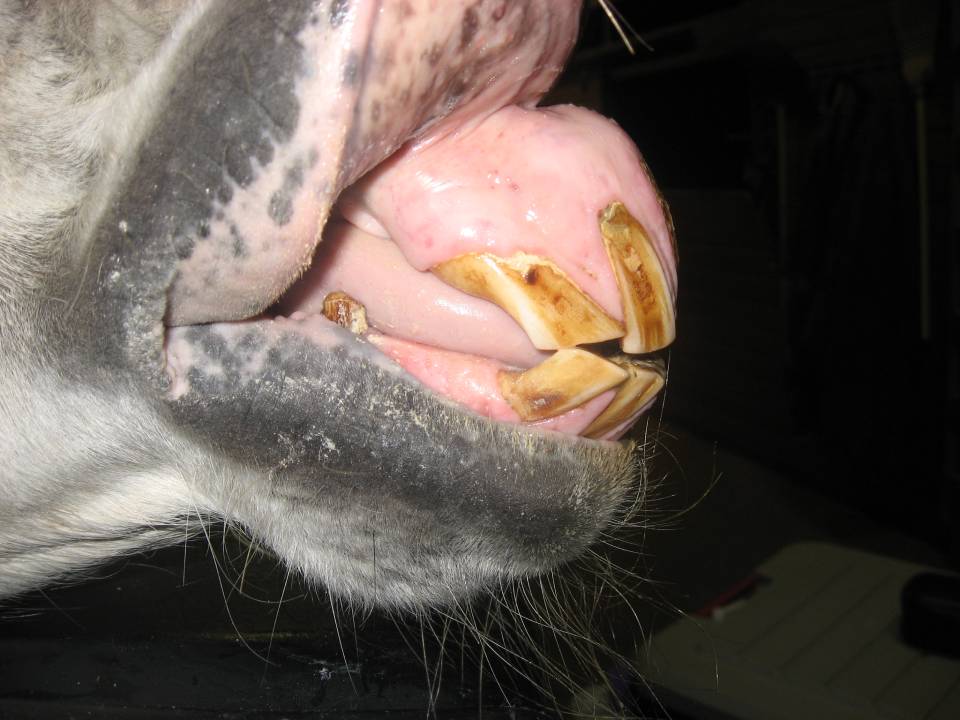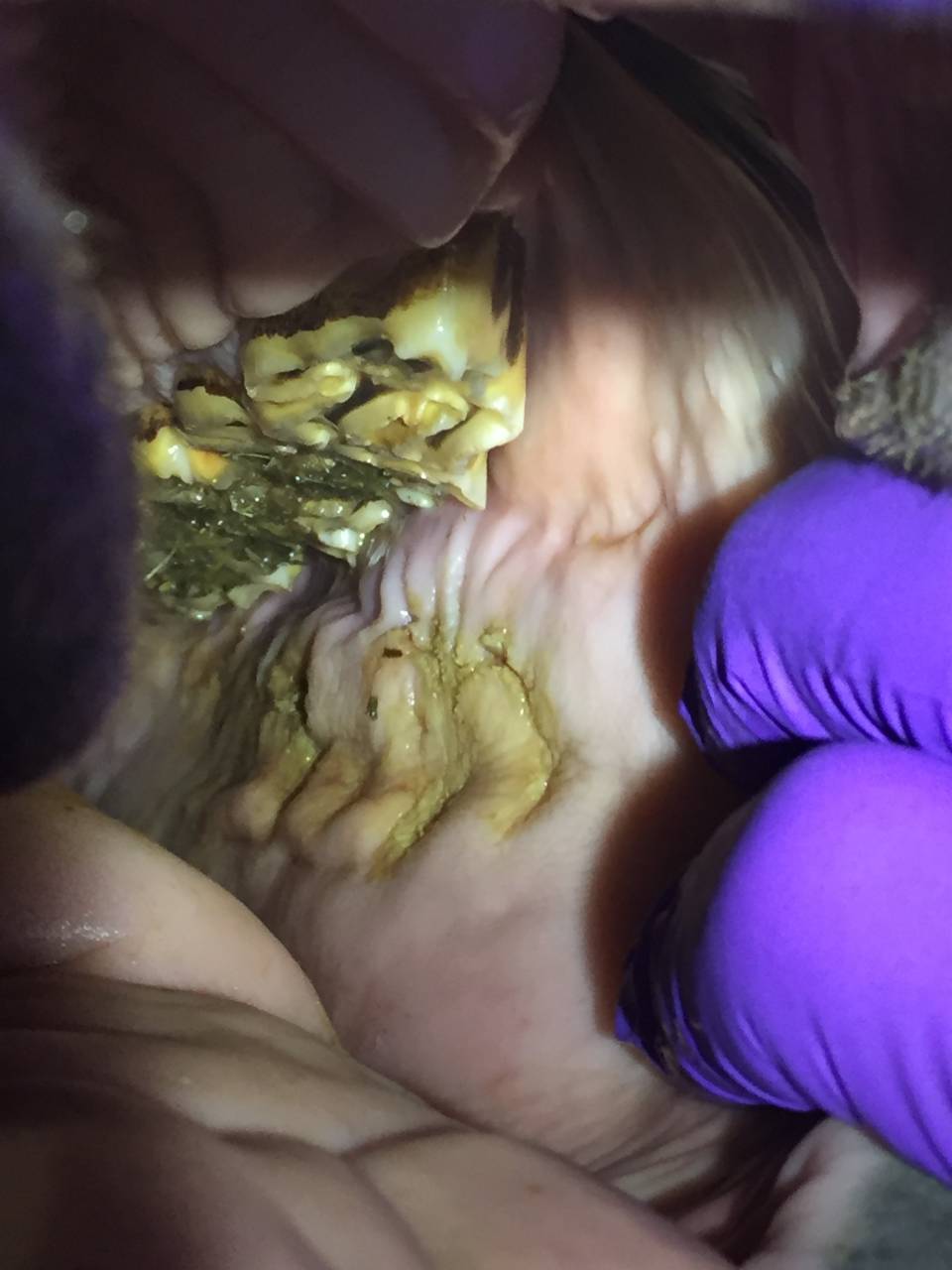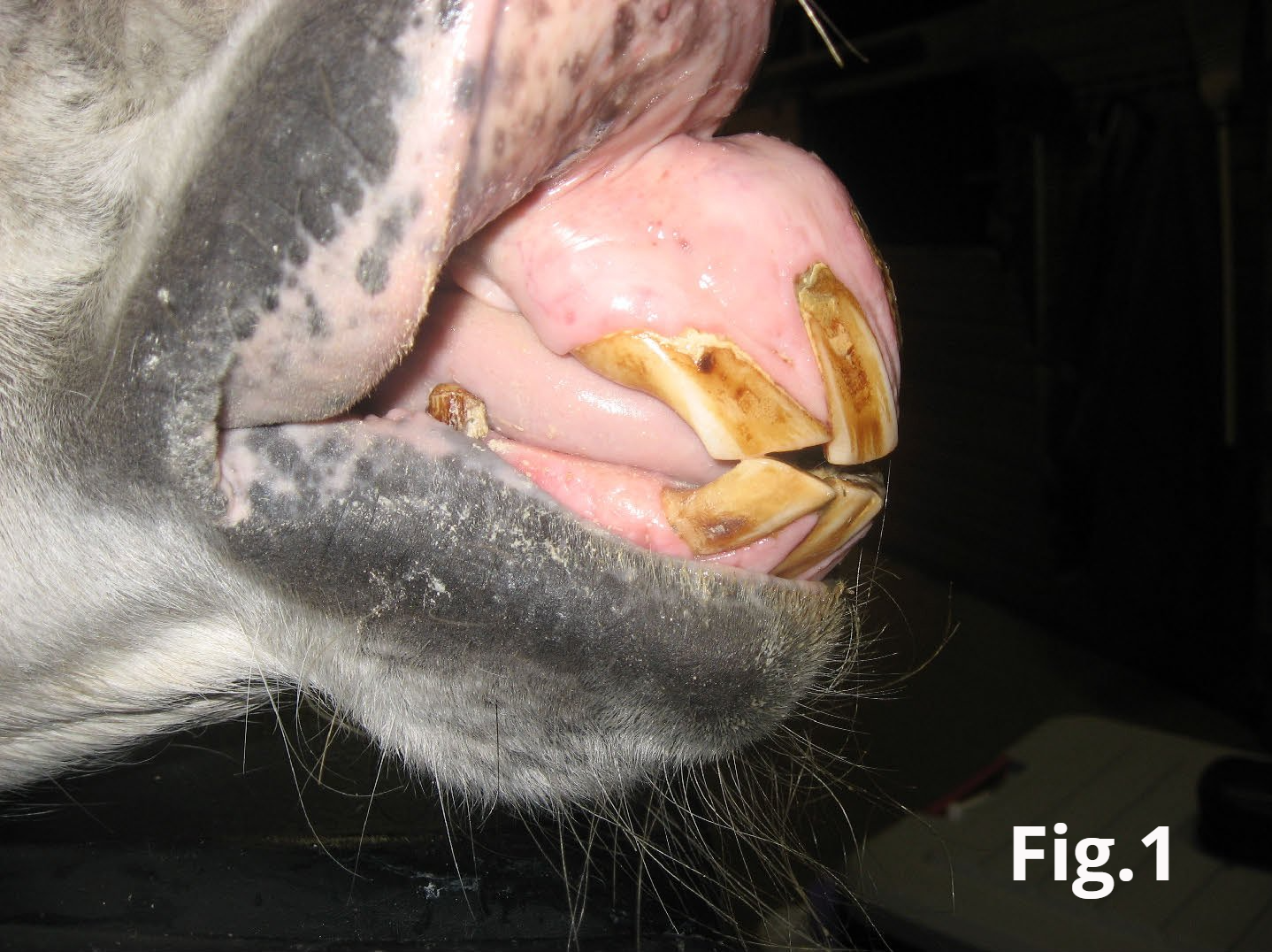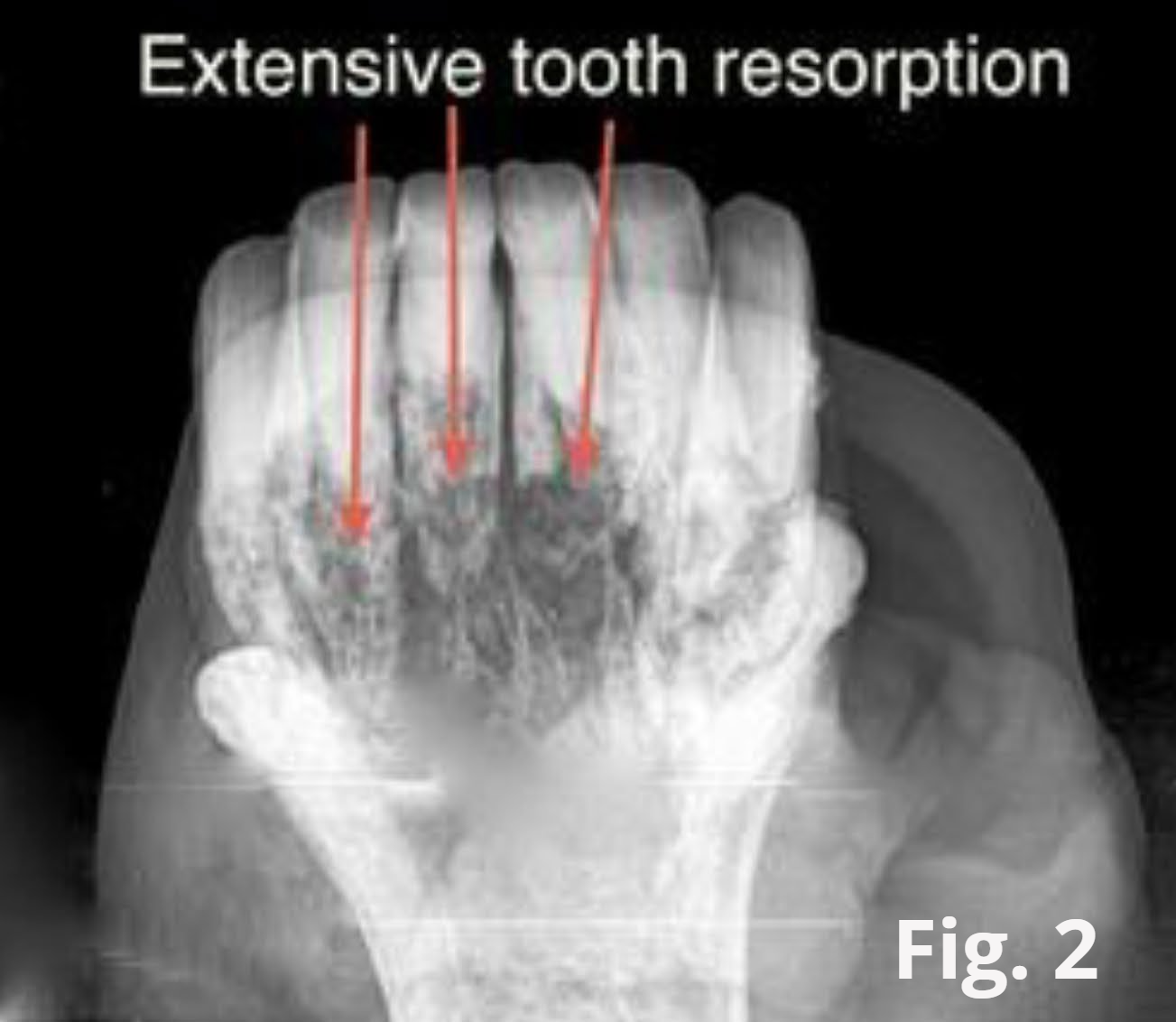History- “Stanley”, 20 year old Arabian gelding. Owner reports an increasingly bulbous appearance to gum tissue above incisors. Horse reportedly is very resistant to bit being placed into mouth and reacts violently when bit is being removed. Owner also reports horse is having difficulty biting through treats like carrots.
Diagnosis- Based on examinations and radiographs, Stanley is suffering from Equine Odontoclastic Tooth Resorption and Hypercementosis (EORTH). EORTH is a disease process affecting the incisor and canine teeth of the horse. This disease most commonly affects horses that are 15 yrs of age or older. The etiology of this disease is unknown at this time, but the effects are quite dramatic.
The progression of EORTH is marked by severe tooth root resorption. The body basically degrades the tooth root and supporting structures of the tooth. This results in the affected teeth becoming loose. In an attempt to stabilize itself, the tooth responds by producing large amounts of cementum. This overproduction of cementum can give the gum tissue a bulbous appearance (see fig. 1). The instability of the teeth will result in a severe inflammatory response and underlying infection. When the disease has progressed to this point, your horse will be experiencing severe pain.








